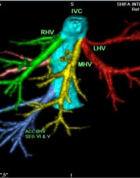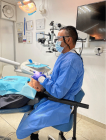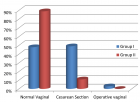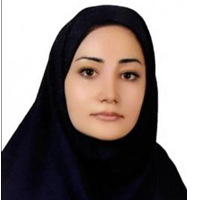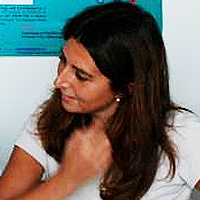Abstract
Research Article
Lower-body negative pressure/ergometer exercise in bed rest: Effects on female orthostatic tolerance
Linjie Wang*, Zhili Li, Cheng Tan, Huijuan Wang, Xiangjie Zhou, Siyang He, Peng Zou and Yinghui Li
Published: 21 October, 2020 | Volume 4 - Issue 2 | Pages: 040-048
Introduction: Alternatively using gradient lower-body negative pressure (LBNP) and ergometer exercise (LBNP + ergo) under a flight schedule framework was explored to detect its orthostatic capacity maintenance effects in female subjects after 15 days of -6° head-down bed rest (HDBR).
Methods: Twenty-two female university students were divided into a control group (n = 8), an LBNP group (n = 7), and an LBNP + ergo group (n = 7). Ergometer exercise consisted of an interval exercise protocol with 2 min intervals alternating between 41% and 70% VO2max. Gradient LBNP was decompressed in 10 mm Hg intervals to -40 mmHg every 5 min. intermittent ergometer exercise and LBNP were alternatively performed. Tilt test was performed 2 days before HDBR (R-2), on the day of HDBR termination (R+1), and 5 days after HDBR (R+5).
Results: Fifty percent of the participants (11/22) did not pass the tilt test on R+1. The orthostatic tolerance time decreased from 20 to 16.1 ± 2.1 min in the control group, to 10.0 ± 2.7 min in the LBNP group (p = 0.01) and to 16.3 ± 2.0 min in the LBNP + ergo group. The HRs and BPs were at similar level among three groups during tilt test on different test days. Compared with the control group, the LBNP + ergo group had higher SV and CO percentage changes at R+1(p < 0.023) and R+5 (p < 0.00001) during the tilt test.
Conclusion: LBNP combined with ergometer exercises fails to prevent orthostatic intolerance but it induced some positive hemodynamic changes during tilt test after 15 days HDBR.
Read Full Article HTML DOI: 10.29328/journal.jnpr.1001036 Cite this Article Read Full Article PDF
Keywords:
Head-down bed rest; Lower-body negative pressure; Orthostatic intolerance; Exercise; Tilt testc
References
- Barantke M, Krauss T, Ortak J, Lieb W, Reppel M, et al. Effects of gender and aging on differential autonomic responses to orthostatic maneuvers. J Cardiovasc Electrophysiol. 2008; 19: 1296-1303. PubMed: https://pubmed.ncbi.nlm.nih.gov/18662181/
- Cheng YC, Vyas A, Hymen E, Perlmuter LC. Gender differences in orthostatic hypotension. Am J Med Sci. 2011; 342: 221-225. PubMed: https://pubmed.ncbi.nlm.nih.gov/21289499/
- Carter JR, Lowrence JE, Klein JC. Menstrual cycle alters sympathetic neural responses to orthostatic stress in young, eumenorrheic women. Am J Physiol Endocrinol Metab. 2009; 297: E85-E91. PubMed: https://pubmed.ncbi.nlm.nih.gov/19401460/
- Dill DB, Costill DL. Calculation of percentage changes in volumes of blood, plasma, and red cells in dehydration. J. Appl. Physiol. 1974: 37: 247-248. PubMed: https://pubmed.ncbi.nlm.nih.gov/4850854/
- Dychman DJ, Sauder CL, Ray CA. Effects of short-term and prolonged bed rest on the vestibulosympathetic reflex. Am. J. Physiol. Heart Circ. Physiol. 2012; 302: H368-H374. PubMed: https://pubmed.ncbi.nlm.nih.gov/22021328/
- Fu Q, Arbab-Zadeh A, Perhonen MA, Zhang R, Zuckerman JH, et al. Hemodynamics of orthostatic intolerance: implications for gender difference. Am. J. Physiol. Heart Circ. Physiol. 2004; 286: H449-H457. PubMed: https://pubmed.ncbi.nlm.nih.gov/14527942/
- Goldberger AL, Mietus JE, Rigney DR, Wood ML, Fortney SM. Effects of head-down bed rest on complex heart rate variability: response to LBNP testing. J Appl Physiol. 1994; 77: 2863-2869. PubMed: https://pubmed.ncbi.nlm.nih.gov/7896633/
- Goswami N, Grasser E, Roessler A, Schneditz D, Hinghofer-Szalkay H. The cardiovascular response to lower body negative pressure in humans depends on seal location. Physiol Res. 2009; 58: 311-318. PubMed: https://pubmed.ncbi.nlm.nih.gov/18637716/
- Goswami N, Blaber AP, Hinghofer-Szalkay H, Convertino VA. Lower body negative pressure: physiological effects, applications and implementation. Physiol Rev. 2019; 99: 807-851. PubMed: https://pubmed.ncbi.nlm.nih.gov/30540225/
- Greenleaf JE, Stinnett HO, Davis GL, Kollias J, Bernauer EM. Fluid and electrolyte shifts in women during +Gz acceleration after 15 days’ bed rest. J Appl Physiol. 1977; 42: 67-73. PubMed: https://pubmed.ncbi.nlm.nih.gov/833079/
- Greenleaf JE, Wade CE, Leftheriotis G. Orthostatic responses following 30-day bed rest deconditioning with isotonic and isokinetic exercise training. Aviat Space Environ Med. 1989; 60: 537-542. PubMed: https://pubmed.ncbi.nlm.nih.gov/2751583/
- Güell A, Cornac A, Faurat MM, Gauquelin G, Pavy-Le-Trano A, et al. Lower body negative pressure as a countermeasure against orthostatic intolerance for long term space flight. Acta Astronautica. 1992; 27: 103-107. PubMed: https://pubmed.ncbi.nlm.nih.gov/11537573/
- Guinet P, Schneider SM, Macias BR, Watenpaugh DE, Hughson RL. et al. WISE-2005: effect of aerobic and resistive exercises on orthostatic tolerance during 60 days bed rest in women. Eur J Appl Physiol. 2009; 106: 217-227. PubMed: https://www.ncbi.nlm.nih.gov/pmc/articles/PMC2881341/
- Guyton AC, Hall JE. Text book of medical physiology (11th ed.). Elsevier Inc: Philadelphia, Pennsylvania. 2006.
- Harm DL, Jennings RT, Meck JV, Powell MR, Putcha L, et al. Invited review: gender issues related to space flight: a NASA perspective. J Appl Physiol. 2001; 91: 2374-2383. PubMed: https://pubmed.ncbi.nlm.nih.gov/11641383/
- Hisdal J, Toska K, Walloe L. Beat-to-beat cardiovascular responses to rapid, low-level LBNP in humans. Am J Physiol Regulatory Integrative Comp Physiol. 2001; 281: R213-R221. PubMed: https://pubmed.ncbi.nlm.nih.gov/11404296/
- Hyatt KH, West DA. Reversal of bedrest-induced orthostatic intolerance by lower body negative pressure and saline. Aviat Space Environ Med. 1977; 48: 120-124. PubMed: https://pubmed.ncbi.nlm.nih.gov/871280/
- Jeong SM, Shibata S, Levine BD, Zhang R. Exercise plus volume loading prevents orthostatic intolerance but not reduction in cerebral blood flow velocity after bed rest. Am J Physiol Heart Circ Physiol. 2012; 302: H489-H497. PubMed: https://pubmed.ncbi.nlm.nih.gov/22081705/
- Kozlovskaya IB, Pestov ID, Egorov AD. The system of preventive measures in long space flights. Human Physiology. 2010; 36: 773-779.
- Ligtenberg G, Blankestijn PJ, Koomans HA. Hemodynamic response during lower body negative pressure: role of volume status. J Am Soc Nephrob. 1988; 9: 105-113. PubMed: https://pubmed.ncbi.nlm.nih.gov/9440094/
- Louisy F, Gaudin C, Oppert JM, Güell A, Guezennec CY. Haemodynamics of leg veins during a 30-day -6° head-down bed rest with and without lower body negative pressure. Eur J Appl Physiol. 1990; 61: 349-355.
- Mattu MT, Iannetta D, MacInnis MJ, Doyle-Baker PK, Murias JM. Menstrual and oral contraceptive cycle phases do not affect submaximal and maximal exercise responses. Scand J Med Sci Sports. 2020; 30: 472-484. PubMed: https://pubmed.ncbi.nlm.nih.gov/31663173
- Meck JV, Reyes CJ, Perez SA, Goldberger AL, Ziegler MG. Marked exacerbation of orthostatic intolerance after long- vs. short-duration spaceflight in veteran astronauts. Psychosom Med. 2001; 63: 865-873. PubMed: https://pubmed.ncbi.nlm.nih.gov/11719623/
- O’Hara R, Khan M, Pohlman R, Schlub J. Leg resistance training: effects upon VO2peak and skeletal muscle myoplasticity. Am J Exerc Physiologists. 2004; 7: 27-43.
- Schendier SM, Watenpaugh DE, Lee SMC, Ertl AC, Williams WJ, et al. Lower-body negative-pressure exercise and bed-rest-mediated orthostatic intolerance. Med Sci Sports Exerc. 2002; 34: 1446-1453. PubMed: https://pubmed.ncbi.nlm.nih.gov/12218737/
- Schneider SM. Lee SM, Macias BR, Watenpaugh DE, Hargens AR. WISE-2005: exercise and nutrition countermeasures for upright VO2pk during bed rest. Med Sci Sports Exer. 2009; 41: 2165-2176. PubMed: https://pubmed.ncbi.nlm.nih.gov/19915502/
- Shibasaki M, Wilson TE, Bundgaard-Nielsen M, Seifert T, Secher NH, et al. Model flow underestimates cardiac output in heat-stressed individuals. Am J Physiol Regul Integr Comp Physiol. 2011; 300: R486–R491. PubMed: https://www.ncbi.nlm.nih.gov/pmc/articles/PMC3043797/
- Summers RL, Platts S, Myers JG, Coleman TG. Theoretical analysis of the mechamisms of a gender differentiation in the propensity for orthostatic intolerance after spaceflight. Theoretical Biology and Medical Modeling. 2010; 7: 8.
- Sun XQ, Yao YJ, Wu XY, Jiang SZ, Jiang CL, et al. Effect of lower body negative pressure against orthostatic intolerance induced by 21 days head-down tilt bed rest. Aviat Space Environ Med. 2002; 73: 335-340. https://pubmed.ncbi.nlm.nih.gov/11952053/
- Watenpaugh DE, O’Leary DD, Schneider SM, Lee SM, Macias BR, et al. Lower body negative pressure exercise plus brief postexercise lower body negative pressure improve post-bed rest orthostatic tolerance. J Appl Physiol. 2007; 103: 1964-1972. PubMed: https://pubmed.ncbi.nlm.nih.gov/17947505/
- Wenner MM, Stachenfeld NS. Orthostatic Intolerance). In Morren FC (eds) Encyclopedia of Exercise Medicine in Health and Disease. Springer: Berlin, Heidelberg.2012; 665-667.
- Winker R, Barth A. Bidmon D, Ponocny I, Weber M, et al. Endurance exercise training in orthostatic intolerance: A randomized, controlled trial. Hypertension. 2005; 45: 391-398. PubMed: https://pubmed.ncbi.nlm.nih.gov/15699447/
- Zwart SR, Hargens AR, Lee SMC, Macias BR, Watenpaugh DE, et al. Lower body negative pressure treadmill exercise as a countermeasure for bed rest-induced bone loss in female identical twins. Bone. 2007; 40: 529-537. PubMed: https://www.ncbi.nlm.nih.gov/pmc/articles/PMC1876821/
Figures:
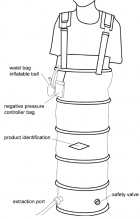
Figure 1

Figure 2

Figure 3

Figure 4

Figure 5
Similar Articles
-
Postural Stability Induced by Supervised Physical Training may improve also Oxygen Cost of Exercise and Walking Capacity in Post-Menopause, Obese WomenFernanda Velluzzi,Massimiliano Pau,Andrea Loviselli,Raffaele Milia,Daniela Lai,Daniele Concu,Gianmarco Angius,Abdallah Raweh,Andrea Fois,Alberto Concu*. Postural Stability Induced by Supervised Physical Training may improve also Oxygen Cost of Exercise and Walking Capacity in Post-Menopause, Obese Women. . 2017 doi: 10.29328/journal.jnpr.1001001; 1: 001-011
-
Comparison of two types of strengthening exercises in upper limbs for improvement of wheelchair propulsion in paraplegicsAkanksha Satyavanshi,Monalisa Pattnaik,Patitapaban Mohanty*. Comparison of two types of strengthening exercises in upper limbs for improvement of wheelchair propulsion in paraplegics. . 2017 doi: 10.29328/journal.jnpr.1001004; 1: 027-033
-
Determining the use and value of social support in Telerehabiliation Interventions for individuals with Multiple Sclerosis: A narrative synthesis reviewLucinda Pidgeon,Trudy Pelton*,Andrew Soundy. Determining the use and value of social support in Telerehabiliation Interventions for individuals with Multiple Sclerosis: A narrative synthesis review. . 2017 doi: 10.29328/journal.jnpr.1001014; 1: 120-136
-
Rehabilitation of proximal humerus fractures: An environmental scan of Canadian physiotherapy practice patternsLowell L Kwan,Norma J MacIntyre*. Rehabilitation of proximal humerus fractures: An environmental scan of Canadian physiotherapy practice patterns. . 2017 doi: 10.29328/journal.jnpr.1001013; 1: 104-119
-
Frequency specific microcurrent resolves chronic pain and adhesions after ulnar transposition surgeryJodie Adams*,Carolyn McMakin. Frequency specific microcurrent resolves chronic pain and adhesions after ulnar transposition surgery. . 2017 doi: 10.29328/journal.jnpr.1001012; 1: 099-103
-
Physical Therapy for Transverse Myelitis: A Case ReportAllison Buchanan,Kelli J Wilkerson,Han-Hung Huang*. Physical Therapy for Transverse Myelitis: A Case Report. . 2018 doi: 10.29328/journal.jnpr.1001017; 2: 015-021
-
Effectiveness of Soft Tissue Mobilisation as an adjunct to the Conventional Therapy in patients with Ankylosing SpondylitisPatitapaban Mohanty*. Effectiveness of Soft Tissue Mobilisation as an adjunct to the Conventional Therapy in patients with Ankylosing Spondylitis. . 2018 doi: 10.29328/journal.jnpr.1001016; 2: 001-014
-
Physical benefits of (Salah) prayer - Strengthen the faith & fitnessGhazal Kamran*. Physical benefits of (Salah) prayer - Strengthen the faith & fitness. . 2018 doi: 10.29328/journal.jnpr.1001020; 2: 043-053
-
Effectiveness of therapeutic ultrasound and kinesio tape in treatment of tennis elbowHamza Shaheen,Azzam Alarab*,Muntaser S Ahmad. Effectiveness of therapeutic ultrasound and kinesio tape in treatment of tennis elbow. . 2019 doi: 10.29328/journal.jnpr.1001025; 3: 025-033
-
Lower-body negative pressure/ergometer exercise in bed rest: Effects on female orthostatic toleranceLinjie Wang*,Zhili Li,Cheng Tan,Huijuan Wang,Xiangjie Zhou,Siyang He,Peng Zou,Yinghui Li. Lower-body negative pressure/ergometer exercise in bed rest: Effects on female orthostatic tolerance. . 2020 doi: 10.29328/journal.jnpr.1001036; 4: 040-048
Recently Viewed
-
Outpatient operative hysteroscopy: evaluation of patient satisfaction and acceptanceClare Margaret Crowley*,Noelle Gill,Minna Geisler. Outpatient operative hysteroscopy: evaluation of patient satisfaction and acceptance. Clin J Obstet Gynecol. 2022: doi: 10.29328/journal.cjog.1001098; 5: 005-008
-
Predictors of positive treatment response to PTNS in women with overactive bladderSuneetha Rachaneni*,Doyo Enki,Megan Welstand,Thomasin Heggie,Anupreet Dua. Predictors of positive treatment response to PTNS in women with overactive bladder. Clin J Obstet Gynecol. 2022: doi: 10.29328/journal.cjog.1001097; 5: 001-004
-
Prediction of neonatal and maternal index based on development and population indicators: a global ecological studySedigheh Abdollahpour,Hamid Heidarian Miri,Talat Khadivzadeh*. Prediction of neonatal and maternal index based on development and population indicators: a global ecological study. Clin J Obstet Gynecol. 2021: doi: 10.29328/journal.cjog.1001096; 4: 101-105
-
A Genetic study in assisted reproduction and the risk of congenital anomaliesKaparelioti Chrysoula,Koniari Eleni*,Efthymiou Vasiliki,Loutradis Dimitrios,Chrousos George,Fryssira Eleni. A Genetic study in assisted reproduction and the risk of congenital anomalies. Clin J Obstet Gynecol. 2021: doi: 10.29328/journal.cjog.1001095; 4: 096-100
-
Leiomyosarcoma in pregnancy: Incidental finding during routine caesarean sectionToon Wen Tang*,Phoon Wai Leng Jessie. Leiomyosarcoma in pregnancy: Incidental finding during routine caesarean section. Clin J Obstet Gynecol. 2021: doi: 10.29328/journal.cjog.1001094; 4: 092-095
Most Viewed
-
Evaluation of Biostimulants Based on Recovered Protein Hydrolysates from Animal By-products as Plant Growth EnhancersH Pérez-Aguilar*, M Lacruz-Asaro, F Arán-Ais. Evaluation of Biostimulants Based on Recovered Protein Hydrolysates from Animal By-products as Plant Growth Enhancers. J Plant Sci Phytopathol. 2023 doi: 10.29328/journal.jpsp.1001104; 7: 042-047
-
Sinonasal Myxoma Extending into the Orbit in a 4-Year Old: A Case PresentationJulian A Purrinos*, Ramzi Younis. Sinonasal Myxoma Extending into the Orbit in a 4-Year Old: A Case Presentation. Arch Case Rep. 2024 doi: 10.29328/journal.acr.1001099; 8: 075-077
-
Feasibility study of magnetic sensing for detecting single-neuron action potentialsDenis Tonini,Kai Wu,Renata Saha,Jian-Ping Wang*. Feasibility study of magnetic sensing for detecting single-neuron action potentials. Ann Biomed Sci Eng. 2022 doi: 10.29328/journal.abse.1001018; 6: 019-029
-
Pediatric Dysgerminoma: Unveiling a Rare Ovarian TumorFaten Limaiem*, Khalil Saffar, Ahmed Halouani. Pediatric Dysgerminoma: Unveiling a Rare Ovarian Tumor. Arch Case Rep. 2024 doi: 10.29328/journal.acr.1001087; 8: 010-013
-
Physical activity can change the physiological and psychological circumstances during COVID-19 pandemic: A narrative reviewKhashayar Maroufi*. Physical activity can change the physiological and psychological circumstances during COVID-19 pandemic: A narrative review. J Sports Med Ther. 2021 doi: 10.29328/journal.jsmt.1001051; 6: 001-007

HSPI: We're glad you're here. Please click "create a new Query" if you are a new visitor to our website and need further information from us.
If you are already a member of our network and need to keep track of any developments regarding a question you have already submitted, click "take me to my Query."






